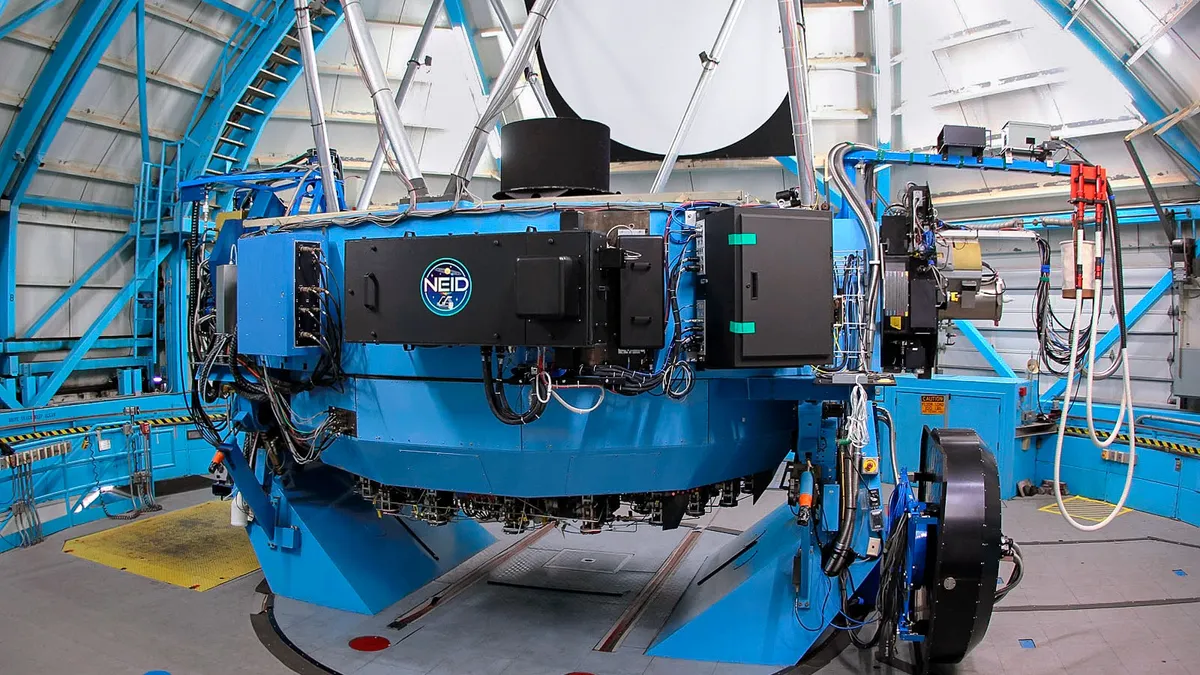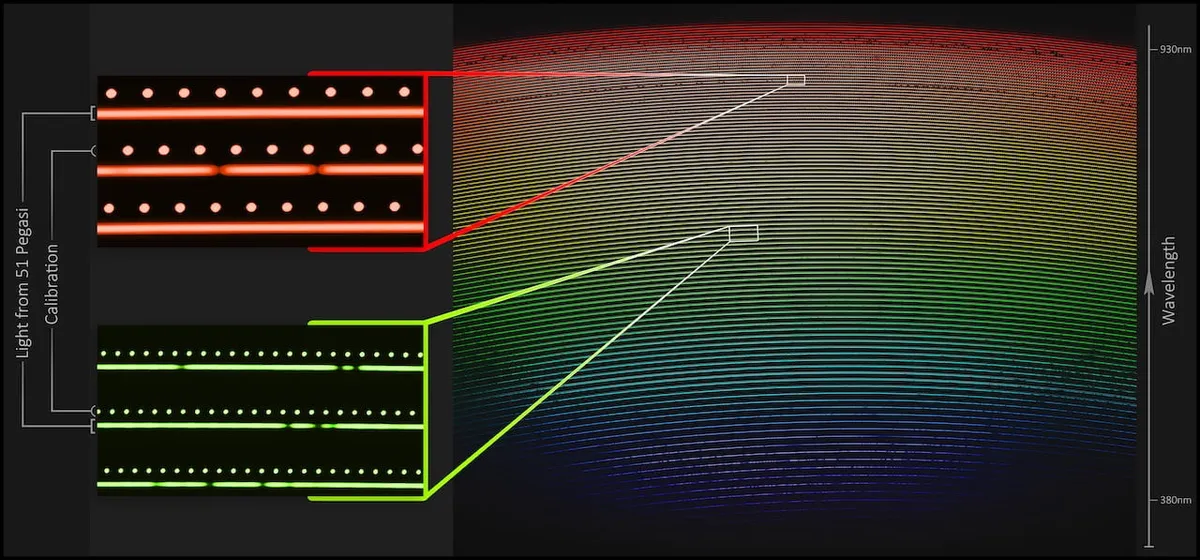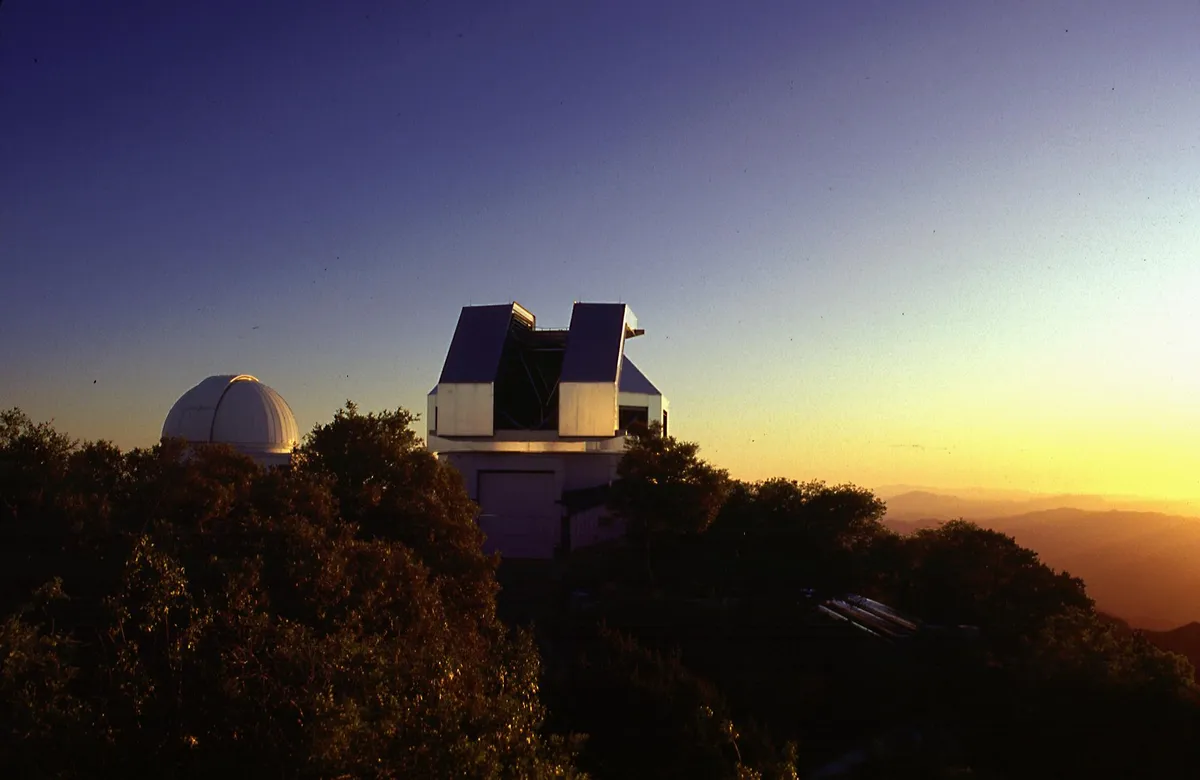The NASA-funded NEID instrument is one of the latest pieces of technology helping astronomers study exoplanets.
The instrument, whose name is pronounced 'NOO-id', observes planets orbiting stars beyond our Solar System, gathering information to reveal their mass and density.
More on exoplanets

It can even tell whether an exoplanet might be a rocky, Earth-like world with the potential for supporting life.
We spoke to Jason Wright, Professor of Astronomy and Astrophysics at Pennsylvania University, who is one of the lead scientists on the project, to find out more about what NEID can do.

What is the current state of exoplanet study?
It's really exciting. We are now in a new generation of exoplanet discovery instruments.
For a long time we were using older techniques that let us measure the motions of stars down to a precision of about 1 metre per second.
This new generation of instruments is stable enough that we can make even more precise measurements of the motions of stars, and that's important because the way we discover, or characterise, or even weigh exoplanets orbiting other stars is by the motion they induce on those stars.
These more precise instruments give us the opportunity to discover and characterise ever-more Earth-like planets around nearby stars.
How does NEID find exoplanets?
When planets go around their stars, the stars in their own way go around the planet. They have a tiny counter orbit as the planet goes around them.
These motions are really small. For scale, Jupiter makes the Sun move by about 12 metres per second. So that's about the same speed as an Olympic sprinter.
And we can tell that the stars are moving from the Doppler shift of their light, if we have a sufficiently stable instrument.
Up until recently, most instruments were able to measure motions of about 1 metre per second.
For reference, Earth makes the Sun move about 10cm per second, so this is 10 times less than our best instruments.
That's why we've needed a new generation of instruments, so that we can detect these gravitational tugs.
NASA and the National Science Foundation teamed up to build a new next-generation instrument for the world to use.
NEID is that instrument. It's took about 5 years from concept to actually installing it on the telescope, and it's now located at the Kitt Peak National Observatory in southern Arizona.
It's available for astronomers around the world to use, to try and do the best science they can.
We hope that NEID will be one of the primary vehicles for figuring out whether those are rocky, and how massive they are.

What can NEID tell you about planets?
Doppler spectrographs, as we call them, work by spreading starlight out into its component colours.
Just like light passing through a prism will turn into a little rainbow, we turn starlight into a very broadly spread-out rainbow so that we can see extremely subtle differences among the colours.
Starlight isn't just a perfect rainbow. If you can disperse the light out broadly enough, there are effectively missing colours, due to the chemical constituents of the star's atmosphere.
The wavelengths of those exact colours that are missing will shift depending on whether the star is moving towards or away from us because of the Doppler effect.
Those are the things we are trying to measure, so we can say for example "this very specific wavelength of light that's missing its colours is appearing at a very different wavelength than we expected, and that means that the star is moving a little bit towards or away from us."
We then track those motions over many years to try and see the subtle wobble in the star back and forth. These are really subtle motions.
We image the spectrum on a detector, a lot like the detector in your phone, for instance, that you use to take pictures.
That detector is made up of a lot of little pixels. So if we see that the colour of light that is missing is on one pixel and next week it's on a different pixel, one pixel over, that amounts to a kilometre or maybe 100 metres per second of Doppler shift.
If we want to measure below 1 metre per second, then we need to measure shifts of 1/1000th of a pixel in those missing colours. It's very challenging and that's why it took so long to build NEID.

How does the movement of the exoplanet tell you about its mass and density?
Imagine if Jupiter were the only planet orbiting the Sun. Jupiter orbits the Sun, and the Sun does a much smaller wobble; a sort of counter-orbit.
They both orbit their common centre of mass, which sits between them.
So the more massive Jupiter is, the closer to Jupiter the centre of mass is and the bigger the Sun's orbit is about the centre of mass in the same orbital period.
That means it's moving faster, because it has farther to go in its orbit.
The more massive a planet, the more it tugs on the star, and the faster the star moves in response.
If we're looking for planets like Earth, they don't have very much mass. They only make the star move by something like 10 cm per second. So we need a more precise instrument if we're going to measure that.
We also learn not just that the planet is there, but also how long it takes to go around the star, based on how long it takes the star to go back and forth.
That tells us the orbital period - the length of the year of the planet - and from Kepler's laws of motion that tells us how far the planet is from the star, which tells us its typical temperature: whether it might have liquid water, for instance.
From the mass we can infer whether it's a big giant planet, or whether it's something more like Earth.
And from the pattern we can tell whether the planet's orbit is circular, or whether it's highly eccentric, which would mean that it gets very hot and very cold over the course of a year.
So we can actually learn a lot from these measurements, but it does require us to make those measurements for months and years.

Can it tell us about the atmospheres of the exoplanets?
This is a spectrograph and in principle it can measure that sort of thing, but it's not what it was designed to measure.
I'm hopeful that for giant planets like Jupiter - especially really hot ones with big puffy atmospheres - we'll be able to see new missing colours show up in a very subtle way when the planet passes in front of the star and the starlight goes through the planet's atmosphere.
But for terrestrial planets like Earth, different instruments will be making measurements like that: probably space missions in the next generation of exoplanet instruments.
Is NEID open for use to anyone who wants to book time on it?
Absolutely. It's done through our National Science Foundation's optical infrared astronomy lab.
They have what's called an 'open skies policy' for all of the telescopes that they operate.
'Open skies' means anyone can propose: you don't even have to be a professional astronomer in principle.
Anyone can ask to use it, and then the National Science Foundation compiles panels of experts to evaluate all of the proposals and pick the ones that are most likely to produce the best science.
We can be confident, as result, that the science being done with NEID will really be the best science it could possibly be doing, because of the competitive proposal process.

What's your role on NEID?
I serve as the instrument team's project scientist, so it was my job as we developed and built the instrument to make sure that all the design trades optimised the science that would come out of the instrument.
Recently I've spent a lot of time at the telescope commissioning the instrument: getting it working, figuring out the kinks, calibrating everything, getting it into an operational mode.
We certainly hope to get a lot of use out of it. As part of the deal with NASA to build NEID here at Penn State, we get guaranteed time on it.
So in addition to the 'open skies' time, our team will also have a significant chunk of time to do the science we'd like to do.

What are your hopes for the operation of NEID?
One of my favourite parts about really powerful instruments that have a competitive proposal process is that you know it's going to do great science, and you can guess what that science is, but it's often people who propose to do something unexpected who do the most interesting science.
I'm hopeful that it will discover planets that we will be able to directly image with upcoming missions.
I'm sure that we will characterise and measure the masses of a lot of interesting exoplanets discovered by TESS.
And I'm hoping that we'll discover rocky planets with interesting atmospheres with water in them, that we can characterise perhaps with the James Webb Space Telescope.
NEID is a beautiful, outstanding stellar spectrograph, so I'm sure it will do all sorts of other science that we didn't think of, helping us understand stars and the planets that orbit them a lot better.
Is the future of exoplanet hunting looking bright?
Absolutely. I got into the exoplanet research game when it was about 5 years old. Exoplanets had been discovered about 5 years earlier and there were only about 20 of them known when I started.
It's been amazing to watch it go from a brand new field when we didn't know what we were going to find and everything was a surprise, to the advent of the Kepler mission, which discovered thousands of exoplanets.
Now we have a good sense of the numbers of exoplanets that are out there and we can design experiments to study the most interesting ones, so I think we are moving into a new era of the field, as it matures, where instruments like NEID are almost common.
There are a few other instruments very similar. Certainly almost every observatory now has an instrument not as precise as NEID, but can do the same sort of exoplanet science.
We have whole space missions that are being designed just to find a few of nearest most interesting planets.
The field has grown tremendously. Something like a quarter of the abstracts at big professional astronomy meetings are in some way related to exoplanets.
So it's been amazing watching it go from a very small field to a significant proportion of what astronomers work on.

Are we likely to find more exomoons?
I depends on what's up there! Maybe, if big exomoons are common, like Endor from Star Wars, for example.
If we're thinking about big Earth-like moons orbiting big planets, then I think it's possible that we'll find some soon. David Kipping's team at Columbia have some really interesting candidates.
As far as smaller moons are concerned, like our Moon or Europa or Enceladus, that's a lot harder, and I'm not sure how long it will be before we find those.
But I'm hopeful that the Universe does have Earth-like moons out there, and that we'll be studying them soon.
I think it's always interesting to stretch. When astronomers were first looking for exoplanets, they didn't think they would be so easy to find.
I say easy: they're very difficult to find in the sense that we're looking for Earth-like planets, but it wasn't clear when early pioneers of the field were doing this that exoplanets would be so ubiquitous, and that the giant ones would be so close to their stars that they'd actually be relatively easy to find.
Then there was this explosion: all of a sudden we were finding lots of them.
So I think it's important to think about exomoons and things that we think might be out of our reach, because who knows? Nature might surprise us again.
